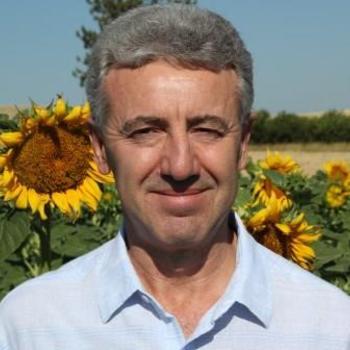About this publication
Industrial hemp may only be grown in compliance with applicable state and federal law, including the 2014 and 2018 farm bills and the anticipated U.S. Department of Agriculture regulations. The following information is being provided for educational purposes only to inform licensed growers operating in compliance with applicable state and federal laws. Consult your local authorities, Department of Agriculture representatives, or personal attorney for questions regarding the legality of growing industrial hemp in your jurisdiction.
The right soil for hemp
Hemp can be grown in a variety of soils but grows best in loose, deep soils rich in organic matter, on fertile loams, and with a pH from 6.0 to 7.5. Hemp does not grow well in wet soils. Wet soils can restrict root and shoot growth, reduce fiber quality, and result in uneven plant heights that present challenges at harvest. Clay soils pose problems with excess soil wetness and tillage difficulties. Test your soil several months before planting and apply lime and fertilizers as needed to get optimal yields.
Seedbed preparation and seeding
Soil preparation for hemp is similar to other spring crops, such as spring small grains. Fiber hemp is seeded in the spring on well-prepared soils. Soil preparation depends on the specific cropping systems and rotational scheme in use but is similar to that of spring wheat. Hemp seeds require a firm seedbed and good soil contact to germinate well.
The best approach is to follow fall plowing with a secondary tillage to provide a firm seedbed free of weeds. Hemp could likely be grown in no-till and reduced-till systems, but this approach is not well-studied. A lack of registered herbicides also adds to the uncertainty of using reduced-till systems.
Hemp is typically seeded after spring wheat or barley but before sweet corn in a growing region. Autoflower varieties have a limited range from seeding to harvest of 50–80 days. Essential oil hemp and fiber hemp varieties require 70–120 days from seeding to harvest, and grain hemp requires 120–180 days. Soil temperature, growing season length, and frost danger dictate when to plant. Some hemp varieties germinate at temperatures as low as 35°F, but germination is quicker and more dependable when the soil is around 50°F. Seeding too early can expose seedlings to frost damage. Young hemp seedlings and mature plants can survive light frost, but early fall frosts can trigger the dry-down process that shuts off growth and leads to early seed setting.
Hemp for essential oils
Seedbed preparation and seeding procedures for hemp grown for essential oil extraction are different than hemp grown for seed hemp. Most hemp varieties produced for essential oils are dioecious (separate male and female plants), and the high-quality resins are nearly all in female plant flowers that have not received pollen from male plants. As a result, breeding methods and cultural practices are employed to maximize the number of unfertilized female plants while minimizing the pollen transfer from male plants.
Because seeds for essential oil hemp are expensive, they are not direct-seeded. Instead, they are germinated in greenhouse flats and transplanted to the field one to four weeks after emergence.
To enhance soil warming and improve weed control and moisture retention, soil is often cultivated into beds that are 2–4 feet wide and then covered in plastic row covers, similar to some vegetable crops.
In planting, individual seedlings are spaced out within the row to allow room for each plant to develop to full size, often 6–8 feet tall and branching to a width of 4–5 feet. This spacing allows plants to branch out and produce maximum flowering density. Row dimensions are a function of available bed-shaping and transplanting equipment.
Though not recommended, the densest population for essential oil hemp would have an orientation of rows that are 3 feet apart with plants spaced every 3 feet within a row, resulting in a final density of about 5,000 plants per acre. Typically, producers want entry into fields without injuring plants and more air circulation to reduce disease, so a spacing of 8 feet between rows and 4 feet between plants results in a final density of about 1,800 plants per acre.
Irrigate with drip tape to avoid mildew buildup, damaging flowers or washing off resins with overhead sprinklers — especially later in the season.
Hemp for fiber and seed
When hemp is grown for fiber or seed production, it is typically direct-seeded using standard seed drills similar to those used for wheat or small legumes. Row spacing can vary from 6–7 inches to 20–25 inches depending on the specific variety.
Industrial hemp varieties are typically seeded to a depth of 0.5–1 inch. When moisture is readily available, seeds will germinate quickly at the shallower end. In drier conditions, seeds need to be uniformly planted at a 1.5-inch depth. Seeding deeper than 1.5 inches results in progressively poorer plant emergence, even with abundant moisture.
The goal for fiber and seed hemp is to create a large number of plants per acre with limited branching to produce a high volume of stem fiber and seed heads. A targeted plant density for grain production is 10–15 plants per square foot (435,600–653,400 plants per acre), while optimal plant density for fiber production is around 30–35 plants per square foot (1.31 million–1.52 million plants per acre).
Hemp seed size may vary significantly between varieties and so can the seeding rate. Growers should follow the instructions that come with the seed variety. To account for differences in germination, emergence, disease and interplant competition, seed hemp for grain at 25–40 pounds per acre, and hemp for fiber at 40–80 pounds per acre.
Higher seeding rates close the canopy earlier and provide greater plant density, better weed control, and thinner stalks that improve fiber quality. Excessively high stand populations may cause increased plant competition and self-thinning later in the season. Fiber hemp can compensate for lower density by increased branching.
However, that branching may reduce fiber quality. Higher seeding rates that ensure almost no branching of the main stem may provide a more uniform stem height, improving ease of harvest. The seeding rate for grain, or oilseed, hemp is usually half that of fiber types, resulting in more branching and flowering and seed heads on secondary branches.
Seedlings emerge three to 10 days after planting and will grow fastest with an air temperature between 59°F and 82°F. Flood or sprinkler irrigation is best because of the high plant population and narrow row spacing. Hemp grows slowly for three to five weeks and then undergoes a rapid stem elongation and growth period for five to six weeks.
Rapid growth ends when shorter day lengths trigger the flowering process. Densely seeded fiber types may reach 16–18 feet tall, while some grain types may only reach 3 feet. Many multiple-use or essential oil cultivars fall between these two growth heights.
© 2019 Oregon State University.



